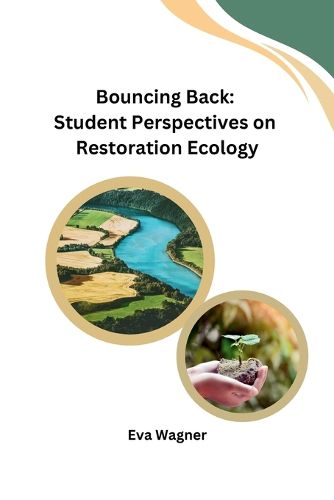Readings Newsletter
Become a Readings Member to make your shopping experience even easier.
Sign in or sign up for free!
You’re not far away from qualifying for FREE standard shipping within Australia
You’ve qualified for FREE standard shipping within Australia
The cart is loading…






This title is printed to order. This book may have been self-published. If so, we cannot guarantee the quality of the content. In the main most books will have gone through the editing process however some may not. We therefore suggest that you be aware of this before ordering this book. If in doubt check either the author or publisher’s details as we are unable to accept any returns unless they are faulty. Please contact us if you have any questions.
Restoration ecology is a fascinating field that focuses on restoring damaged ecosystems to their original state or improving their ecological functioning. In this subchapter, we will delve into the fundamentals of restoration ecology, exploring the key concepts and techniques used in this discipline.
At its core, restoration ecology aims to reverse the negative impacts of human activities on the environment. It recognizes that humans have had a profound influence on ecosystems worldwide, leading to habitat destruction, pollution, and the loss of biodiversity. Restoration ecology seeks to mitigate these impacts by implementing practices that promote the recovery and resilience of ecosystems.
One of the fundamental principles of restoration ecology is the importance of understanding the historical context of an ecosystem. By studying the pre-disturbance state of an ecosystem, ecologists can gain insights into its original structure, composition, and functions. This knowledge serves as a blueprint for restoration efforts, helping to guide the selection of appropriate techniques and species.
Another crucial concept in restoration ecology is the idea of successional dynamics. Ecological succession refers to the process by which ecosystems change and develop over time. Understanding these dynamics allows restoration ecologists to predict how ecosystems will respond to restoration interventions and design strategies that facilitate the desired trajectory.
Restoration ecologists employ a range of techniques to restore damaged ecosystems. These techniques can include removing invasive species, reintroducing native plants and animals, and implementing habitat management practices. Additionally, the use of innovative technologies, such as genetic engineering and assisted migration, are being explored to enhance restoration outcomes.
It is important to note that restoration ecology is not a one-size-fits-all approach. Ecosystems vary greatly in their characteristics and the degree of damage they have experienced. Consequently, restoration strategies need to be tailored to the specific needs and challenges of each ecosystem.
As students interested in ecology, understanding restoration ecology is crucial for several reasons. Firstly, it provides insight into the impacts of human activities on the environment and offers potential solutions to mitigate these impacts. Secondly, restoration ecology offers opportunities for hands-on involvement in ecological restoration projects, allowing students to contribute to real-world conservation efforts. Lastly, understanding restoration ecology can inspire innovative thinking and problem-solving skills, as students explore ways to restore and protect ecosystems in the face of global environmental challenges.
$9.00 standard shipping within Australia
FREE standard shipping within Australia for orders over $100.00
Express & International shipping calculated at checkout
This title is printed to order. This book may have been self-published. If so, we cannot guarantee the quality of the content. In the main most books will have gone through the editing process however some may not. We therefore suggest that you be aware of this before ordering this book. If in doubt check either the author or publisher’s details as we are unable to accept any returns unless they are faulty. Please contact us if you have any questions.
Restoration ecology is a fascinating field that focuses on restoring damaged ecosystems to their original state or improving their ecological functioning. In this subchapter, we will delve into the fundamentals of restoration ecology, exploring the key concepts and techniques used in this discipline.
At its core, restoration ecology aims to reverse the negative impacts of human activities on the environment. It recognizes that humans have had a profound influence on ecosystems worldwide, leading to habitat destruction, pollution, and the loss of biodiversity. Restoration ecology seeks to mitigate these impacts by implementing practices that promote the recovery and resilience of ecosystems.
One of the fundamental principles of restoration ecology is the importance of understanding the historical context of an ecosystem. By studying the pre-disturbance state of an ecosystem, ecologists can gain insights into its original structure, composition, and functions. This knowledge serves as a blueprint for restoration efforts, helping to guide the selection of appropriate techniques and species.
Another crucial concept in restoration ecology is the idea of successional dynamics. Ecological succession refers to the process by which ecosystems change and develop over time. Understanding these dynamics allows restoration ecologists to predict how ecosystems will respond to restoration interventions and design strategies that facilitate the desired trajectory.
Restoration ecologists employ a range of techniques to restore damaged ecosystems. These techniques can include removing invasive species, reintroducing native plants and animals, and implementing habitat management practices. Additionally, the use of innovative technologies, such as genetic engineering and assisted migration, are being explored to enhance restoration outcomes.
It is important to note that restoration ecology is not a one-size-fits-all approach. Ecosystems vary greatly in their characteristics and the degree of damage they have experienced. Consequently, restoration strategies need to be tailored to the specific needs and challenges of each ecosystem.
As students interested in ecology, understanding restoration ecology is crucial for several reasons. Firstly, it provides insight into the impacts of human activities on the environment and offers potential solutions to mitigate these impacts. Secondly, restoration ecology offers opportunities for hands-on involvement in ecological restoration projects, allowing students to contribute to real-world conservation efforts. Lastly, understanding restoration ecology can inspire innovative thinking and problem-solving skills, as students explore ways to restore and protect ecosystems in the face of global environmental challenges.